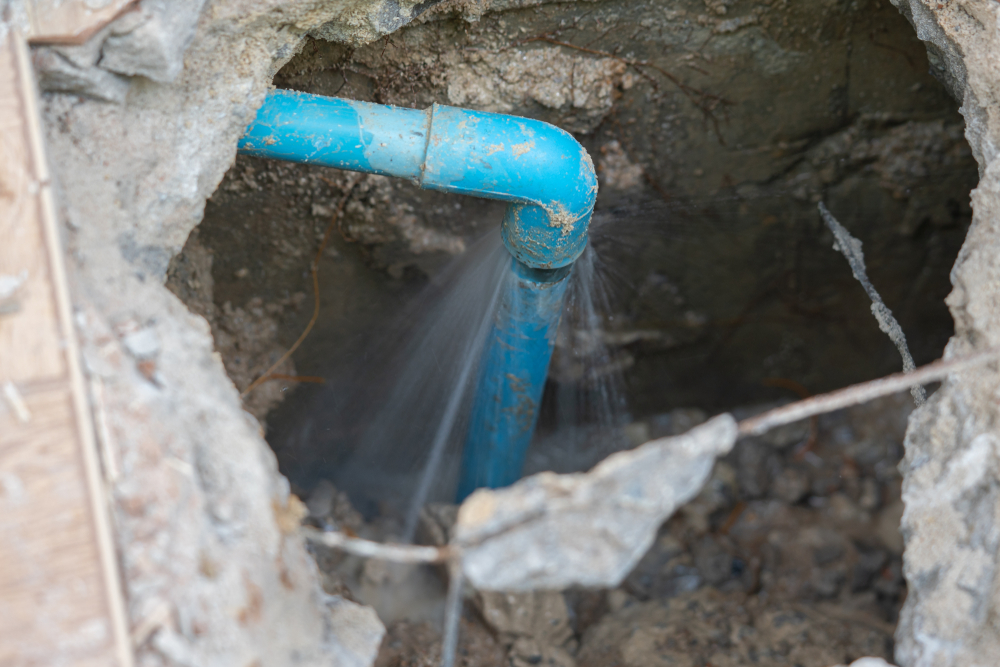The publisher is making a few good pointers related to Top leak detection hacks overall in this content directly below.

Early discovery of dripping water lines can mitigate a prospective calamity. Some little water leakages may not be visible.
1. Check Out the Water Meter
Examining it is a proven means that helps you discover leaks. If it relocates, that shows a fast-moving leakage. This suggests you might have a slow-moving leakage that might even be underground.
2. Examine Water Intake
If you spot abrupt adjustments, in spite of your consumption being the very same, it indicates that you have leaks in your plumbing system. An abrupt spike in your costs suggests a fast-moving leak.
Meanwhile, a steady rise each month, despite the same behaviors, shows you have a slow leakage that's likewise slowly escalating. Call a plumber to extensively inspect your residential or commercial property, especially if you really feel a warm location on your floor with piping below.
3. Do a Food Coloring Test
30% comes from bathrooms when it comes to water intake. Test to see if they are running effectively. Decrease flecks of food color in the container and wait 10 mins. If the color in some way infiltrates your bowl during that time without flushing, there's a leakage between the container as well as dish.
4. Asses Exterior Lines
Don't forget to check your outdoor water lines too. Needs to water seep out of the connection, you have a loose rubber gasket. One tiny leak can lose tons of water and spike your water costs.
5. Evaluate the situation and evaluate
Home owners need to make it a behavior to examine under the sink counters and also inside closets for any kind of bad odor or mold and mildew development. These 2 warnings suggest a leak so timely interest is needed. Doing regular assessments, also bi-annually, can save you from a major problem.
Much more importantly, if you know your home is already old, keep a watchful eye on your heaters, hoses, pipes and so on. Look for stainings as well as compromising as most pipelines as well as appliances have a life expectancy. They will also naturally deteriorate due to wear and tear. Do not wait for it to intensify if you think leaking water lines in your plumbing system. Call a professional plumber right away so you do not wind up with a horrible mess in your house.
Early detection of dripping water lines can reduce a prospective catastrophe. Some little water leaks may not be visible. Examining it is a proven means that assists you find leaks. One little leakage can throw away bunches of water and spike your water costs.
If you suspect leaking water lines in your plumbing system, don't wait for it to rise.
How to Know If Your Home Has a Hidden Leak
Water Meter Reveals Inexplicable Water Usage
If you’d like to test whether or not there’s a leak somewhere in your home, you can do this using your water meter. Here is how to conduct the test:
Don’t use any water in your home for at least 30 minutes; this also means not turning on faucets or water-using appliances.
Go outside, and check your water meter for activity.
If your water meter shows that there was activity, even though no one was using any water, this proves that there is a leak in your home.Visible Mold or Mildew Growth
Leaks behind walls create moist, dark environments that allow mold and mildew to grow and thrive. Eventually, you might see mold growth forming on the wall closest to a hidden leak.
If mold is growing in an area that receives a high amount of moisture, such as a bathroom, it may simply be an indication that better ventilation is needed. However, if you see mold growth on a wall or the ceiling in an area where you would not expect, you probably have a hidden leak.
Musty, Mildew Odor
Sometimes you might not be able to see the mold or mildew that is growing as a result of a leak. However, the smell can give the problem away just as easily. If you catch a whiff of something musty, there’s a good chance that old water is collecting somewhere in your home that you can’t see.
Stained/Warped Walls, Ceilings, or Floors
When your home soaks up water, a variety of red flags can become visible, including ceiling stains, bubbling drywall, warped walls, and sagging floors. While these issues can be caused by excess humidity, they can also be signs that a pipe or plumbing connection has started leaking behind your walls.
Inexplicably High Water Bill
After a while, you get a general sense for what your water bill should be. If you own a pool or sprinkler system, your bill will tend to be higher during summer. However, if you receive a water bill that seems especially high, and you can’t figure out what caused it, then you may have a hidden leak somewhere that’s increasing your bill.
https://www.plumbingjoint.com/blog/2019/july/how-to-know-if-your-home-has-a-hidden-leak/

I'm certainly very inquisitive about Top leak detection hacks and I am hoping you enjoyed reading the entire blog entry. Enjoyed our posting? Please share it. Help another person check it out. Thank you for your time. Come back soon.
We're here 24/7, call!